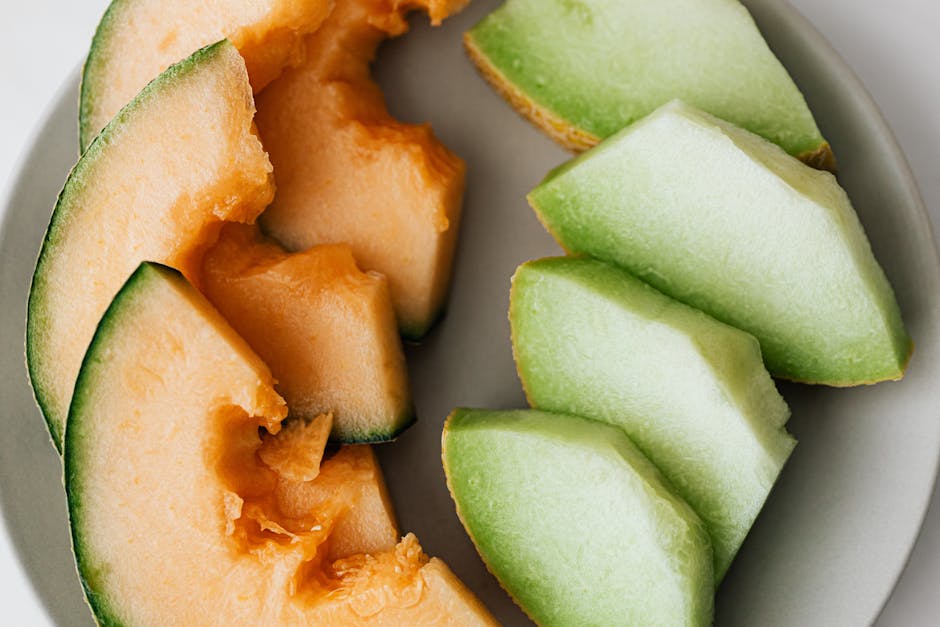Delicate, sweet, and refreshing, cantaloupes are a favorite fruit for many garden enthusiasts. Navigating the world of cantaloupes not only adds a pop of color and sweet scent to your garden but can also offer an array of unique tastes. With numerous cantaloupe varieties available, knowing how to opt for the best suitable one for your garden can be mind-boggling.
Understanding Different Cantaloupe Varieties
Cantaloupes, also known as muskmelons, are renowned for their sweet, aromatic flesh encapsulated in a net-like rind. There is a diverse range of cantaloupe varieties, each boasting its characteristics in taste, size, and planting requirements.
While the variations are extensive, a few stand out in popularity. Let’s compare Hale’s Best, Ambrosia, and Goddess varieties:
| Hale’s Best | Ambrosia | Goddess | |
|---|---|---|---|
| Growth period | 80 days | 86 days | 65 days |
| Size | Medium | Large | Small |
| Taste | Classic Sweet | Extra Sweet | Distinctly Sweet |
| Resistance to disease | Great | Average | Excellent |
Hale’s best, known for its classic sweet flavor, uniquely withstands tough conditions while offering good disease resistance. The Ambrosia variety, larger in size, caters to those who love extraordinarily sweet melons. Goddess variety impresses with its notably short growth period and unrivaled disease resistance.
Factors to Consider When Choosing Cantaloupe Varieties
Choosing the best cantaloupe variety largely depends on your geographical location, preparation space, growth period preference, and produce characteristics, including the taste you favor and as an added bonus, the resistance to diseases.
Pro tip: Always take into account your local climate when choosing a cantaloupe type. Some varieties thrive better under warmer conditions, while others might prefer cooler climates. It’s essential to ensure your chosen variety matches your local climate to maximize yield.
Best Practices:
Visit local nurseries and farmers markets. It helps to consult agricultural extension services to understand what varieties best suit your region and meet enthusiast gardeners. Don’t forget to assess how much growing space you have, the sun exposure, soil type, and watering capacity—these factors greatly influence which cantaloupe to choose.
How to Grow Your Chosen Cantaloupe Variety Successfully
Growing cantaloupe is a rewarding process, from seed sowing to harvesting. Each step holds immense joy and a sense of accomplishment. Here’s a concise step-by-step guide to ensure a thriving garden:
Checklist:
- Sow seeds indoors or outdoors depending on climate.
- Provide deep watering at least once a week.
- Mulch well to retain soil moisture and control weeds.
- Monitor for pests and diseases.
- Harvest when the cantaloupes give off a sweet aroma and easily pull away from the vine.
Pro tip: Cantaloupes crave warmth and light. Ensure your melons receive full sun exposure and have well-drained soil for them to thrive. Incorporating compost into the soil, providing sturdy support for sprawling vines and applying balanced fertilizer can help yield a successful harvest.
Common Challenges in Growing Cantaloupes and Solutions
Cantaloupe gardening has its fair share of challenges. Knowing what to look out for is crucial. Common issues include pest invasion, under-development and the risk of diseases.
Best Practices:
Include regular monitoring of your plants as part of your gardening routine. Check the leaves for signs of pests such as aphids and cucumber beetles. Underdeveloped fruits can be due to insufficient pollination. Ensure enough bees or other pollinators have access to your garden and consider hand pollination if required. As for diseases, prevent them by rotating crops and cleaning your garden tools well.
Choosing Organic Vs. Chemical Methods
There are two major paths gardeners can take to handle these problems: Organic or Chemical methods. Let’s compare the two methods:
| Organic Methods | Chemical Methods | |
|---|---|---|
| Effectiveness | Sustained | Quick |
| Cost-effectiveness | High | Variable |
| Impact on environment | Minimal | Potential harm |
Organic methods, such as using natural pesticides and encouraging beneficial insects, are typically more cost-effective and safer for the environment. On the other hand, chemical methods provide quick action but may impose potential harm to the environment.
Caring for Your Cantaloupe Plants For Better Produce
Caring for your cantaloupe plants throughout their lifecycle has significant effects on their yield and quality of produce. Depending on the stage, they will require different care requirements.
List:
- Sprouting and Vining Stage: Keep the soil warm and well-moisturized. Start training the vines to climb or spread as required.
- Flowering Stage: Ensure enough pollinators are present in the garden during this stage.
- Fruiting Stage: Provide support for melons and continually check for pests and infections.
Pro tip: Regular pruning can stimulate more fruit production. However, be cautious not to over-prune as it could harm the plant. Ensure your cantaloupes receive sufficient sunlight and stay well-supported as they grow.
With a good understanding of different cantaloupe varieties, careful selection based on your environment and preferences, and diligent care, growing cantaloupes can be both fun and rewarding. So, start venturing into the sweet, refreshing world of cantaloupes in your garden journey today!
Key Takeaway:
- Understanding the available cantaloupe varieties, such as Hale’s Best, Ambrosia, and Goddess, is key to successful gardening. Varieties differ in terms of growth period, size, taste, and disease resistance.
- Factors like local climate, available space, preferred taste and size, and disease resistance play vital roles in the selection of cantaloupe variety.
- The growth process requires careful nurturing from seed planting to harvesting, with key steps including regular watering, pest control, and fertilization.
- Encountering challenges in gardening is normal; some of these include pest invasions, underdevelopment, and diseases. These challenges can be managed organically or chemically.
- Caring for your cantaloupe plants greatly affects their productivity. Care requirements can change at each stage of the fruit production process.
Cultivating cantaloupes can be a delight with the right understanding and practice. Not only will it beautify your garden, but it’ll also offer you a refreshing and sweet harvest to enjoy. Remember, gardening is an art, and every challenge faced contributes to a richer experience and knowledge. Happy growing!
FAQs
Q: Apart from taste, are there other benefits to growing my own cantaloupes?
A: Absolutely! Growing your own cantaloupes also offers nutritional benefits, as homegrown fruits often retain more nutrients compared to those in stores. Plus, gardening itself is a rewarding and therapeutic activity.
Q: What is a good organic alternative to chemical fertilizers for my cantaloupe plants?
A: Compost is an excellent organic alternative. It helps maintain soil nutrient levels and promotes healthy plant growth.
Q: How can I tell if my cantaloupes are ready for harvesting?
A: You’ll know your cantaloupes are ready for harvesting when they emit a sweet aroma and detach easily from the vine.
Q: Can I grow cantaloupes in containers?
A: Yes, cantaloupes can be grown in containers. However, you will need to provide adequate support for the vine and ensure the container is large enough to accommodate the plant’s growth.
Q: How frequently should I water my cantaloupe plants?
A: Watering frequency can depend on your local climate. However, a general rule is to provide deep watering at least once a week.
We hope this article has been beneficial. Share it with fellow gardening enthusiasts, and browse through more posts on our website for additional gardening tips and advice!






